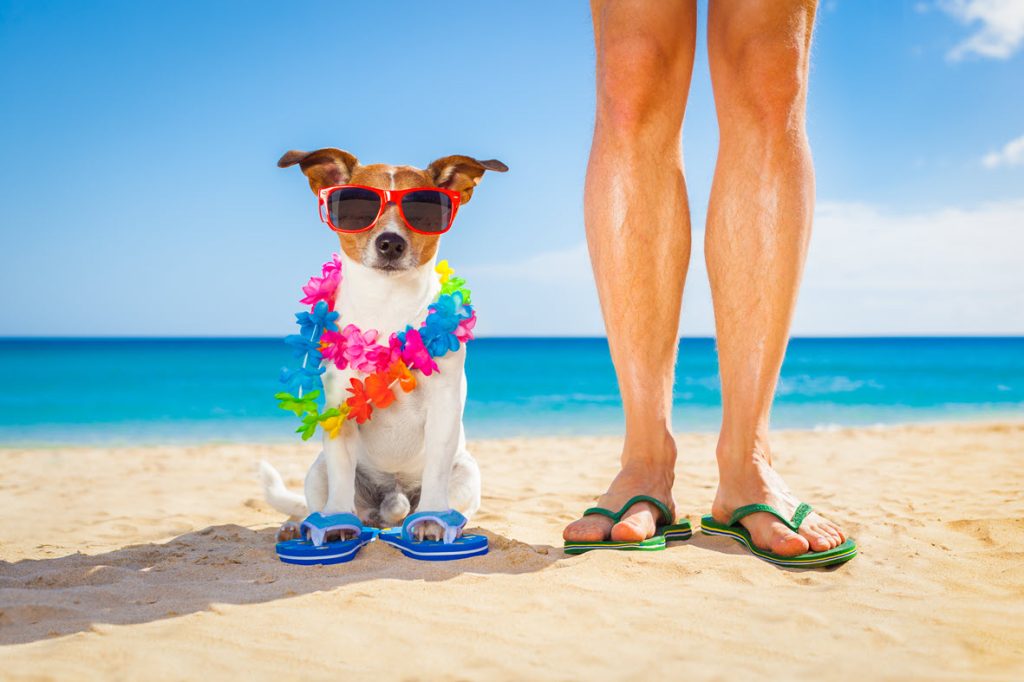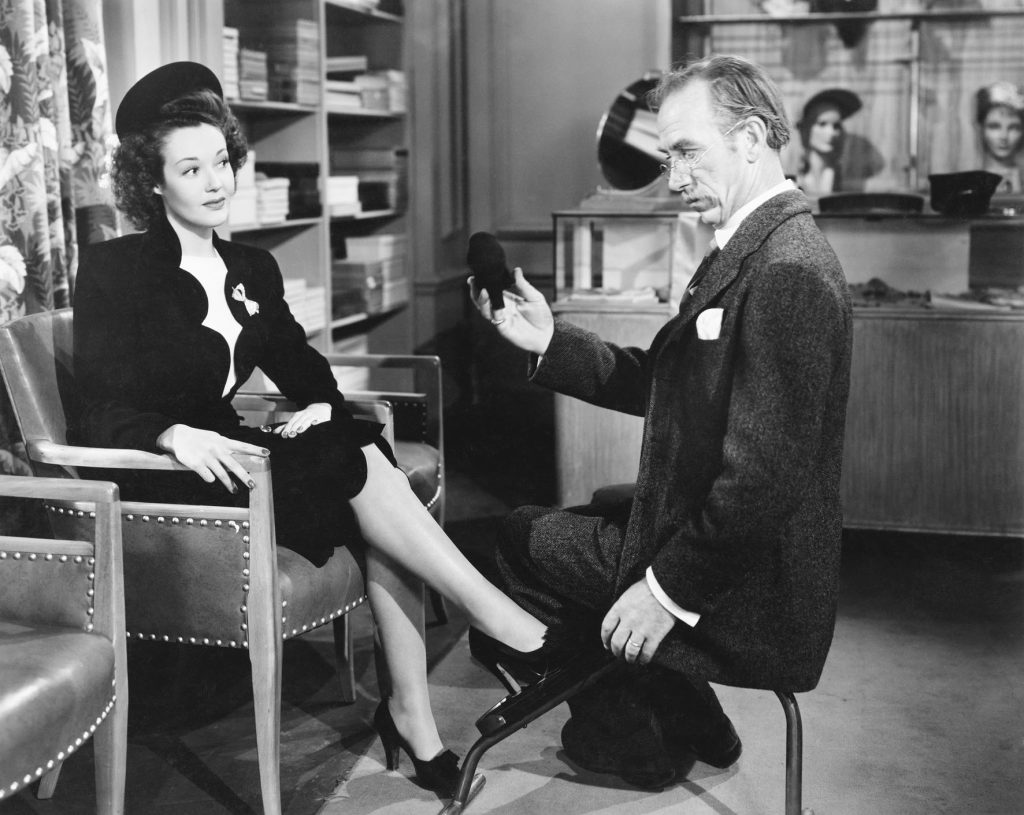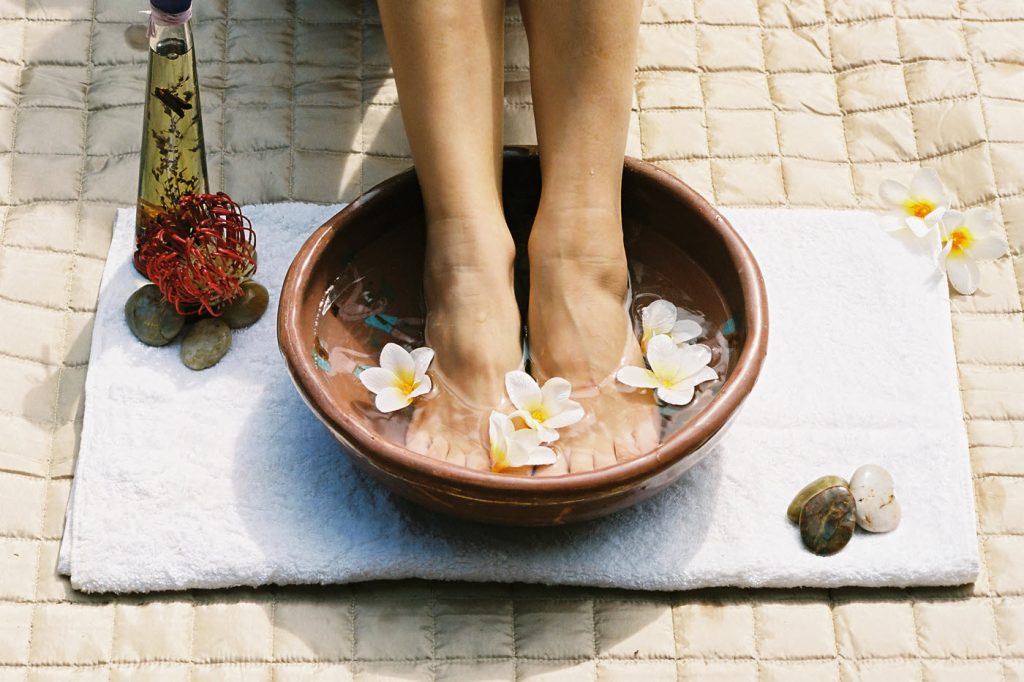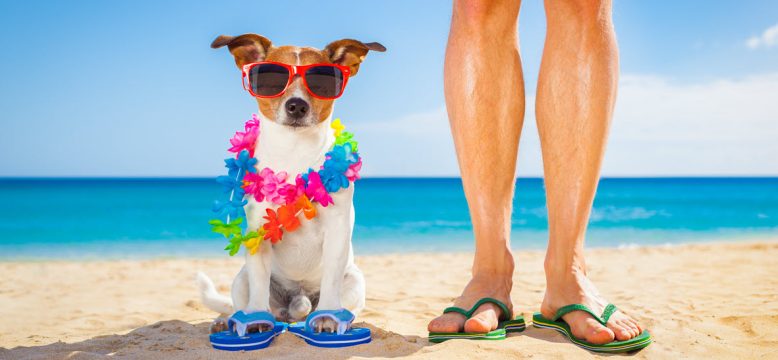Every year I receive a myriad of calls from summer loving people who are desperately seeking help for their heel pain, and without fail this most often happens not long after the warm weather has begun. This has been a pattern of conversation I’ve consistently had with my clients over the past twenty years in practice as a foot health professional. The most common complaints of summer heel pain that have been reported to me each year are often felt through the middle of the arch and right underneath the heel where the fascia attaches, or at the back of the heel and up towards the Achilles. Other descriptive commonalities that have been reported to me have included that the pain is often felt as an ache or even a sharp pain, that it is worse first thing when they get up in the morning or when standing up from a chair after rest, or even towards the end of the day after a heel pain sufferer has been on their feet for most of it.
So why are there so many complaints about heel pain in the summer months?
Unless you’ve experienced this yourself, the answer may not be quite so obvious…or it might just be that you’d prefer to ignore the obvious, because you love this staple summer fashion footwear item soooo much!
But…before I answer this question, let me very briefly explain how heel pain can occur in general, so that you can understand the why behind what I’m going to reveal next…and why the 3 tips I’m going to give you may be able to help minimise summer heel pain, so you can still wear those summer thongs you love.

So how does heel pain happen?
The plantar fascia is a strong bowstring-like ligament that runs from the calcaneum (heel bone) to the tips of the forefoot. If you think of the arch of the foot like a bridge, the plantar fascia is the road that connects the bridge (or the arch) together. It helps with suspension of the foot in normal walking and helps keep the integrity of the arch in place. If the arch of the foot collapses or becomes too rigid, this places extra strain on the plantar fascia.
When the plantar fascia is stretched too far or strained, its soft tissue fibres become inflamed. This usually happens where it attaches to the heel bone, but sometimes affects the middle of the foot and sometimes at the Achilles tendon site too (up the back of the heel as I’ve mentioned earlier, and where past clients have complained they’ve felt their heel pain before).
“Thongs make your toes feel like they’re on holiday”
But why does heel pain happen so often in summer?
Well, over time as the plantar fascia becomes stretched or too rigid, we can lose the stability within our feet. To support our feet, corrective shoes or more often, pre-made inserts or even custom orthotics are commonly prescribed.
Orthotics are inserts (pre-made or custom made) that are placed in shoes that are typically used to treat numerous foot conditions like heel pain. The goal of orthotic therapy is to reduce internal and external forces, which are acting on specific parts of the foot, by supporting it more optimally to reduce foot pain, just like heel and plantar fasciitis pain.
Orthotics alter pressure coming from the ground to the foot (ground reaction force) when you stand, walk or run. By altering these forces, they can achieve better foot function and reduce any excessive forces that lead to foot injury.
Does that make sense?
The problem is that when summer hits, people in general don’t like to wear shoes or shoes with orthotics. Thongs and barefoot becomes the more popular or preferred option. When the sun is shining no style of enclosed footwear, can compare to the freedom of a pair of loose thongs…or even bare feet for that matter, so that you can feel the sand and sea swish between your toes. Thongs (in summer) can also help your feet breathe better and keep cool.

Now, even though thongs can give you all those beautiful feelings initially… then whammy!…the foot pain begins!
You see, thongs just don’t offer the support your feet need for long distance walks. Whilst wearing thongs, you have little to no arch support. This means your feet can become unstable and ankles can then become all too easy to twist, sprain or strain when walking around for extended periods of time. Hence why they’re also called “flip-flops”. Your feet literally flip-flop around, placing extra strain on connective tissue, including the plantar fascia, causing the inflammatory process that we feel as pain.
Another problem that can make matters worse and that can also be encountered is going from enclosed shoes and orthotics to floppy thongs too quickly. Our bodies are adaptive beasts and adaptation takes time. It’s no different than travelling from an overseas winter to an Aussie summer. We don’t all adapt the same. It can take time.
Unfortunately for thong lovers, there is much anecdotal evidence that thongs are not conducive to the health of an individual’s foot and heel pain; however, when individuals are asked why they wear thongs, “comfort” and “freedom” is their usual response.
So, if you’ve got this far, you must really love those thongs and must really want to find out what tips you can implement, to keep wearing those thongs over summer without the heel pain you may have felt in the past?!
So, what can you do to keep wearing thongs this summer and minimise that dreaded heel pain?
Here’s my 3 great tips you can use right now, to help you get the best out of wearing those thongs and have the best summer yet!
- Have your thongs fitted for size by a professional.
It’s really too easy to buy a cheap pair of thongs at a local store, however it’s not always the best choice of footwear and can be an invitation leading to injury. Like all other shoes, it’s better to be fitted for size by a professional. These days there are a variety of thongs available. There are different styles made to fit different types of feet with many having arch supports. These are so much better than the typical flat floppy cheaper variety. Get them fitted right and you’ll be better set this summer minimising your chances of getting debilitating heel pain.

If you would like a recommendation on which thongs may work best for you, please call us for a list of recommended thong brands that have an arch support.
- Don’t wear thongs all day or over long distances.
When you wear thongs, your muscles, tendons and ligaments are forced to work harder because your foot is trying to constantly grip on to the bottom of the thong to keep your foot positioned on it. Make sure you only wear your thongs for short periods of time. Wearing them all day is not going to help your feet at all. For example, try just wearing them from the car to the beach, around the house or for short periods of times. Wearing them all day and especially for long walks is not the best idea. It’s better to balance your time in thongs with enclosed and more supportive and protective shoes when out and about shopping or being more active. Simply put – the best advice I can give you here, is to match more appropriate footwear to the activity being performed, or the time you’re going to carry out that activity for. Even a thong with a supportive heel strap can make a significant difference when it comes to reducing the work the muscles, tendons and ligaments need to do, to help keep the thong on the foot.
- Stretch, exercise and bathe your feet regularly to ease into and during summer.
Remember to stretch and exercise your feet regularly. Taking a few minutes each day to stretch and exercise your feet and legs, can make a big difference when moving from supportive type shoes to not so supportive shoes, just like thongs. When we move from winter shoes to summer attire, do it in a timely matter, not instantly. Your body will adapt best when you do things gently.
And remember – pamper your feet! They are often forgotten about because they tend to be out of sight, out of mind for the best part of our lives…and they do take a fair bit of punishment from even our basic day-to-day regular activities. Give them a massage and a lovely warm bath with salts regularly and believe me they will take you further and you’ll be able to move pain free for longer…and be able to wear those thongs you love so much!
CLICK HERE for a great video for a relaxing salt bath recipe that our receptionist Wendy recommends.

Now the most important thing to remember above all else, is that when heel pain still persists (even after you’ve tried tips just like the 3 I’ve given you) is that you must do this…seek professional help!
Foot Mobilisation Therapy is a technique I and the team at the Foot & Leg Centre, have been using for over 20 years to help thousands of people suffering from foot pain, just like “summer heel pain”! First and foremost, the experienced team at the Foot and leg Centre can assess your feet and heels to determine if we can help your particular heel pain issue. We may even organise weight bearing x-rays of your feet (if indicated) to determine the cause of your heel pain from the inside. Once this is established, we can then determine the best way forward for you…and if we can’t help, we’ll be open and honest and let you know, and what your options are.
To determine if Foot Mobilisation Therapy is the right option for you, so that you can keep doing the things you love or wearing the shoes you love (just like your summer thongs), simply call Raquel at our Kent Town practice on 08 8239 0800 or Wendy at our Glenelg practice on 08 8294 0100 for an appointment today. Alternatively, CLICK HERE to book your appointment. We are currently running a $25 “Summer heel pain assessment” (normally $97) saving you $72.






No comments yet.